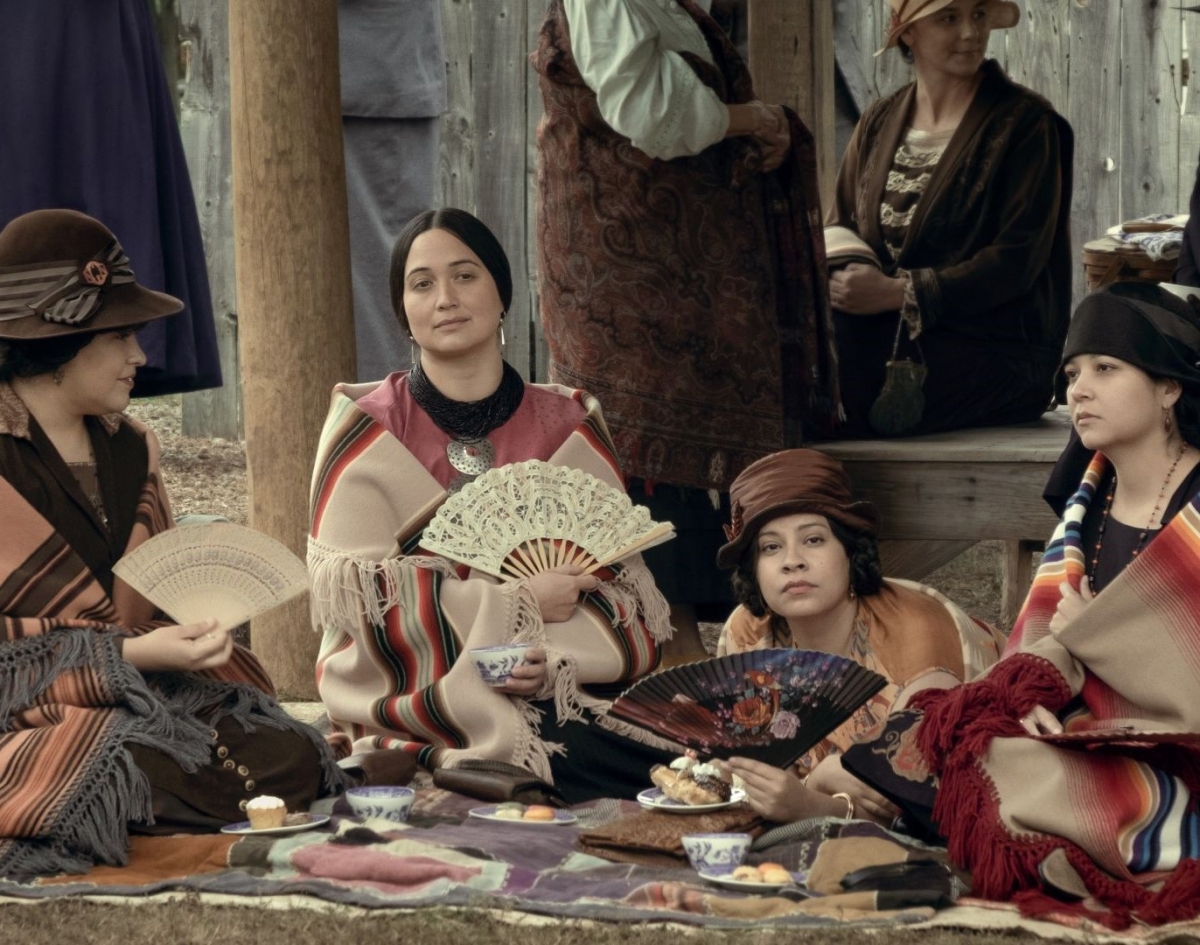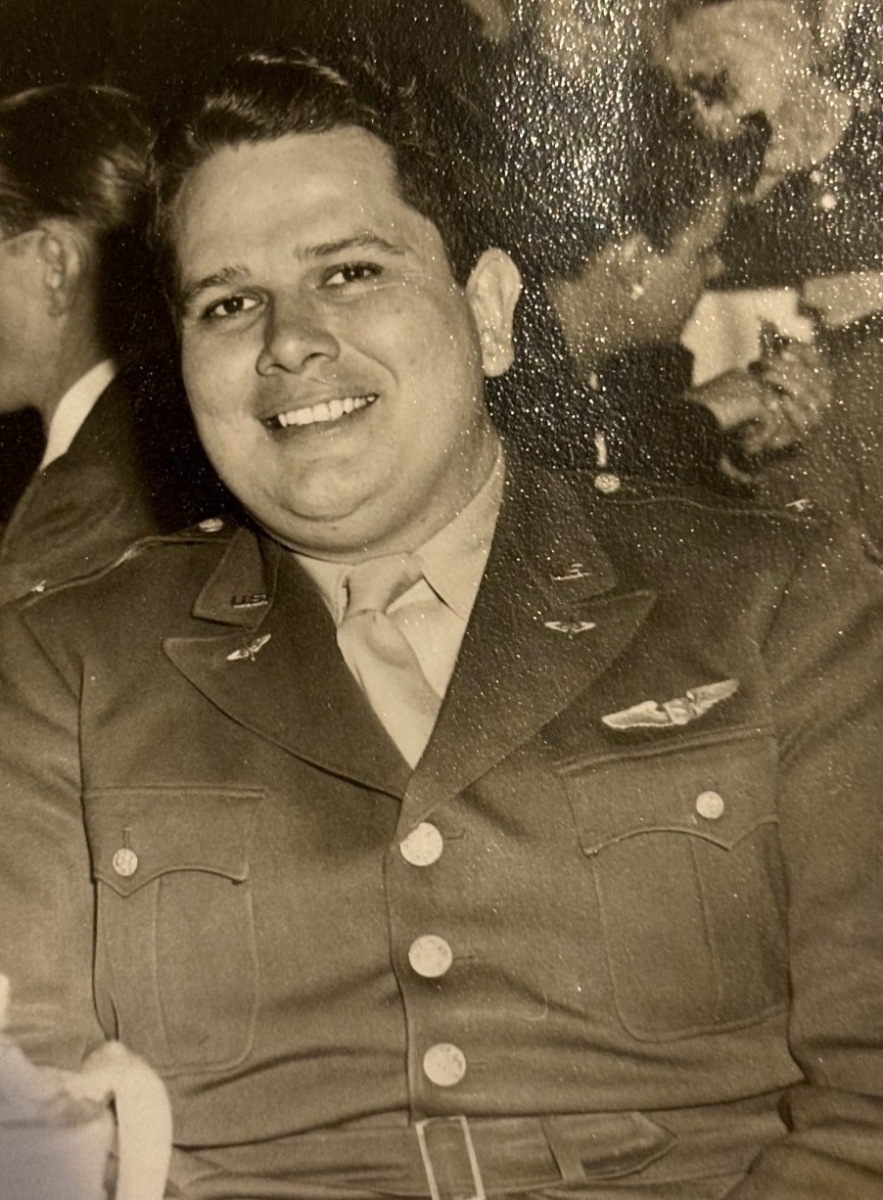by Randall Morton, Founder, The Progressive Forum
The following op-ed originally appeared in the Houston Chronicle, October 14, 2023.
 |
| JaNae Collins, Lily Gladstone, Cara Jade Myers and Jillian Dion in "Killers of the Flower Moon (Melinda Sue Gordon/Apple TV+) |
Last spring, an email arrived with the power of a comet jolted from its ancient orbit. It bore a faded newspaper clipping from 1920s Tulsa — a half-page pictorial of a driveway murder scene of my father’s parents, noting the spot where he watched it as a teenager.
Under the headline “felled by bullets,” I finally learned the facts of my grandparents’ murder. On my computer screen, the past unsealed itself — an era when whites, impelled by a culture of killing, slew Osage Indians with impunity. A next-door neighbor, a lone white man, had waited on the steps for my father’s parents’ black car. Knowing that a white man wouldn’t be prosecuted, he shot them over a petty dispute involving the use of a garage.
My response to the clipping surprised me; I wasn’t distressed. Instead, I found myself coming to a quiet, profound closure. Like the wonder of an unhurried moonrise, my new insights revealed the source of trauma inflicted on me and my family by a wounded, authoritarian father. With the fresh confidence of solid facts, I was astonished to realize I was healing over 100 years of intergenerational trauma.
In an amazing coincidence, I received this email as I followed the making of the movie, “Killers of the Flower Moon,” releasing in theaters Oct. 20. Directed by the renowned Martin Scorsese, it’s based on David Grann’s nonfiction book by the same name. It tells the relatively unknown history of 1920s Oklahoma, when, in the words of one FBI agent, “hundreds and hundreds” of Osages were murdered for their oil money.
I’m an enrolled member of the Osage Tribe, which, according to Grann, “laid claim to much of the central part of the country, a territory that stretched from what is now Missouri and Kansas to Oklahoma, and still farther west, all the way to the Rockies.” After the Louisiana Purchase in 1803, Grann writes, President Thomas Jefferson “informed his secretary of the navy that the Osage were a great nation and that ‘We must stand well because in their quarter, we are miserably weak.’” The tribe was traumatically reduced by forced migrations to their final reservation in 1872, in what is now Osage County, slightly larger than Delaware. At the time, an Indian Affairs agent called the land “utterly unfit for cultivation.”
 |
| Mary Lane, the grandmother of writer Randall Morton, was gunned down on her own carport. |
But in 1906, the Osages outmaneuvered the U.S. government, which was eager to open a new state of Oklahoma the next year. Chief James Bigheart, who spoke seven languages, negotiated the first subsurface mineral trust, according to the Oklahoma Historical Society, which tribal members owned in equal shares. Previously, the U.S. had forced tribes to split their communities and allotments, making it easier for white colonists to buy and seize their properties. The Osages established oil royalties, called headrights, among 2,229 people, and in the oil rush of 1920s Oklahoma, the Osages prospered. Their income in 1923 alone was $400 million in today’s money, according to Grann. For a time, the Osages became the wealthiest group of people in the world per capita. Their newfound wealth, however, sparked jealousy and greed among the surrounding whites. Headrights could only be inherited within families. To work around these restrictions and access Osage money, local whites married into Osage families — leading to an era called the “Osage Reign of Terror,” the focus of “Killers of the Flower Moon.”
The movie looks like a masterpiece. A $200 million production and a 3.5-hour cinematic experience, it stars Leonardo DiCaprio, Robert De Niro and the lovely Lily Gladstone of the Blackfeet Tribe. The premiere at the Cannes Film Festival this past May received a nine-minute standing ovation, launching major Oscar buzz.
I haven’t seen it yet, but I watched the movie production unfold online with scenes in Pawhuska, the Osage Nation capital. The Osage were regal in colored ribbon shirts and proud eagle feathers. Hundreds participated in the movie, and the tribe has universally praised it. I was moved when Scorsese told the Osage News how, in community with the tribe, over Indian dinners listening to stories of tribal elders, he’d altered the Grann plot. No longer would the movie focus on the white FBI agent saving the day; it became a story of love struggling against insidious power. Ernest Burkhart (DiCaprio) and Mollie Kile, an Osage woman (Gladstone), fall genuinely in love — as he joins the execution schemes and she wanes from poison, misdiagnosed as the “peculiar wasting illness.” This epic Osage tragedy, soon to dominate the zeitgeist, calls out the forces of racism, greed and the feverish, irrational human drive for power.
All of which we see in Texas today. In 2021 our power-hungry legislators and governor led the charge to protect whitewashed history by outlawing the Pulitzer Prize-winning book, The 1619 Project, a reframing of Black history, from being taught in public schools. The prohibition of diverse historical perspectives is a tragedy that could deprive millions of the opportunity for healing and personal growth.
In my hometown of Tulsa, Okla., they didn’t teach us about the Osage Reign of Terror. Nor did they teach the infamous Tulsa race massacre of 1921, when mobbing whites burned over 1,000 homes in the residential district called Black Wall Street, destroying lives for generations.
Some ask, why dig up the unhappy past? For me, uncovering my origin stories, the tragedies and successes, has been a source of excitement, growth and strength. Our Texas authoritarians know this. That’s why they’re banning our beautiful histories.
We learn our beauty when we learn our history. This spring, I also discovered that my slain Osage grandmother, Mary Lane, was a pianist who loved opera. She and her husband, a dashing piano player at the Pawhuska silent movies, opened The Ryder Music Company, a store on East Main Street. Ryder is my middle name.
 |
|
Randall R. Morton, Sr., the father of writer Randall Morton, saw both his parents murdered. |
My father, the late Randall R. Morton Sr., half Osage, used his headright to get an education from the University of Oklahoma and Georgetown Law School. A decorated airman in WWII, he finished his short life at 45 as an independent investment banker. I remember him in a dark suit with a handmade red tie, gentle with fine threading. He had style, a generous smile and an easy waltz. He was overwhelmed by alcohol and the chain of trauma he didn’t have the tools to heal, tools I’ve been fortunate to have in my own journey of self-discovery and healing.
The Osage tribe has grown to over 21,000 members throughout the United States, with its own constitution and government. I inherited a 30% headright, amounting to a few hundred dollars a quarter. Along with tribal scholarships, it helped with college tuition for my two children. Both my adult children are enrolled tribal members and proud of their heritage. My daughter learns an Osage word every day.
The Flower Moon is an ageless native symbol of abundance. It’s the full moon in May when the American prairies, covered with new flowers, sing with the effervescence of blooming moonlight, displacing the fear of darkness. As the Osage story grows in prominence, I expect the hopeful symbol of the Flower Moon will grow as well. May it remind all peoples of our abundant human capacity to heal, and to renew our efforts to take back the earth from the forces of greed and racism in the anniversaries of the Flower Moon to come.
Randall R. Morton is the founder of Houston’s Progressive Forum and the Oilfield Breakfast Forum. Randall Morton International was a marketing firm serving oil equipment companies in the U.S., Europe, and Japan. He is a member of a working group at Rice University’s Baker Institute Center for Energy Studies.